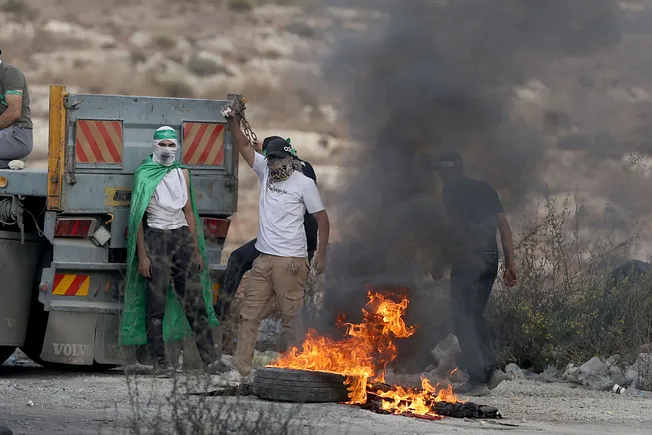
Links
Sheba Medical Centre
Melanie Phillips
Shariah Finance Watch
Australian Islamist Monitor - MultiFaith
West Australian Friends of Israel
Why Israel is at war
Lozowick Blog
NeoZionoid The NeoZionoiZeoN blog
Blank pages of the age
Silent Runnings
Jewish Issues watchdog
Discover more about Israel advocacy
Zionists the creation of Israel
Dissecting the Left
Paula says
Perspectives on Israel - Zionists
Zionism & Israel Information Center
Zionism educational seminars
Christian dhimmitude
Forum on Mideast
Israel Blog - documents terror war against Israelis
Zionism on the web
RECOMMENDED: newsback News discussion community
RSS Feed software from CarP
International law, Arab-Israeli conflict
Think-Israel
The Big Lies
Shmloozing with terrorists
IDF ON YOUTUBE
Israel's contributions to the world
MEMRI
Mark Durie Blog
The latest good news from Israel...new inventions, cures, advances.
support defenders of Israel
The Gaza War 2014
The 2014 Gaza Conflict Factual and Legal Aspects
To get maximum benefit from the ICJS website Register now. Select the topics which interest you.
Hamas’s war on Israel: Everything you need to know

Palestinians burn car tires and block roads as they clash with Israeli forces in the Beit El district of Ramallah, West Bank on October 7, 2023. (Issam Rimawi via Getty Images)
Answering your questions on Hamas, Iran, the occupation, and more.
This piece is being co-published with Tablet.
The shocking attack in southern Israel this weekend was the most deadly killing of Jews since the Holocaust. The death toll is worse than the worst day of the Yom Kippur War. It is a massacre that will transform Israel and the Middle East.
What happened? How did the most sophisticated military power in the Middle East get brought to its knees? And what will this mean for the Jewish state moving forward? The answer to those questions will be the reckoning of our lifetimes.
But there are more basic questions that so many are asking. What follows are some answers that explain how we got here and where we might be going.
What is the extent of the attacks? Why are people calling this “Israel’s 9/11”?
More than 700 Israelis have been killed and more than 2,100 wounded in a series of coordinated surprise attacks that occurred inside Israel. The attacks began on the morning of Saturday, October 7. That’s when, according to an IDF spokesman, some 1,000 Hamas terrorists crossed the internationally recognized border between Gaza and Israel and began massacring civilians in at least 14 Israeli towns and communities, entering homes and apartments and killing men, women, and children—including nearly 300 young people who were attending a rave in the desert.
The scenes of horror and bloodshed that resulted, including the murders of entire families, the kidnapping of small children, and rapes of young women, were seemingly intended to cause maximum anger and shock inside Israel. More than 150 people were seized by the terrorists and taken back into Gaza, where they are being held hostage. They include women, very young children, and the elderly.
To give a sense of the scale of these attacks, 700 dead in a country of 9.3 million people (where everyone knows someone’s cousin) is the equivalent of a terror attack on America in which over 25,000 people were brutally murdered. And not in a single catastrophe: imagine 25,000 Americans killed in various murder sprees across the country.
Who carried out these attacks?
Hamas is the short answer, the terrorist organization that rules the Gaza Strip.
Hamas does not recognize the right of Israel to exist and has waged what it calls a war of resistance since its inception. Its tactics over the years have evolved from the recruitment and deployment of suicide bombers to launching barrages of rockets and missiles. But Hamas had never before launched a military operation of this magnitude into Israel.
Okay, but doesn’t Israel have settlements in Gaza, and don’t they control the lives of the Palestinians who live there?
Israel unilaterally withdrew from every last inch of Gaza in 2005, after dismantling the 21 Israeli settlements that had existed in the territory and handing them over to the Palestinian Authority.
The rationale behind Israel’s withdrawal, carried out by Prime Minister Ariel Sharon, was the notion of land for peace—that Israel would hand over control of certain territories in exchange for security. The land was handed over. The peace never came.
That was 18 years ago. Hamas has ruled the Gaza Strip continuously since 2007, after a five-day-long military conflict with the Palestinian Authority, which was widely hated by Gazans for its corruption.
Since Israel’s withdrawal, Hamas has initiated smaller-scale military conflicts with Israel in 2006, 2008, 2011, and 2018, as well as large-scale wars in 2008–09 (“Operation Cast Lead” in Hebrew), 2012 (“Operation Pillar of Defense”), 2014 (“Operation Protective Edge”), and 2021 (“Operation Guardian of the Walls”).
How could armed terrorists in Jeeps cross Israel’s billion-dollar border fence and massacre hundreds of civilians, take hostages, and bring them back to Gaza? Isn’t the Israeli army supposed to be good at this stuff?
Excellent question. First of all, the timing is important. The attacks came during the Sukkot holiday, when many young soldiers were sent home to be with their families. Other units that were usually in the so-called “Gaza envelope”—the part of Israel that runs along the Gaza Strip—had been moved to the West Bank, in order to protect Israelis who live in Jerusalem and in West Bank communities from attacks during the holiday.
But that doesn’t explain how Israel, one of the most advanced nations on the planet—with some of the most sophisticated surveillance technologies, much of which they invented and developed themselves specifically for these purposes—was caught so unaware.
According to sources in Israel and America who deal with national security and technology, one possible scenario involved a cyberattack that took down Israel’s border fence, with its layers of sensors, early in the morning on Saturday, October 7. The attack would also have also affected parts of the Iron Dome system that protects Israeli civilians from frequent rocket attacks by their neighbors in the Strip.
It also seems likely, as security expert Edward Luttwak explained in Tablet, that Israel’s vaunted security services were deceived by operatives inside the Strip who have been secretly partnering with Israel for the past few years to pass information about rocket attacks by Hamas’s rival inside Gaza, the Iranian-backed terror group Islamic Jihad. As the Israelis became reliant on people they thought to be their partners, they began to imagine that they could quietly manage Hamas by increasing trade with the Strip, letting in more goods, allowing Gazans to enter Israel for free medical treatment, and issuing work permits for Gazans to work inside Israel, where a month’s income can feed a Gazan family for a year.
Since last year, Israel has issued over 15,000 new work permits for Gazans to work in Israel, believing that this humanitarian gesture would be reciprocated by Hamas. They were wrong.
All in all, one of the most striking and terrifying things about the attacks for Israelis, and for outside observers, is that once the terrorists had crossed the border, they seemed to encounter no resistance and were able to simply drive through large swaths of Israel murdering at will. From a security standpoint, there is clearly no substitute for well-trained humans with guns. One of the lessons of this terrible day in Israel’s history is likely to be that the country’s confidence that technology is the key to solving its problems and protecting its citizens is overblown.
You’re telling me that a bunch of low-level terrorists in pickup trucks managed to do all of this on their own?
No.
This was an Iranian attack carried out by Hamas terrorists. Iran is the main arms supplier and political backer of Hamas (which is also supported by Turkey). As The Wall Street Journal reported yesterday, the organization and planning for the attack came directly from the Iranian regime, and was finalized at a meeting last Monday in Beirut.
Beirut? That’s actually important. Iran backs Hamas as part of its “Axis of Resistance,” which is an umbrella alliance of the region’s worst villains—including the butcher Bashar al-Assad in Syria, who killed more than half a million of his own people; Hezbollah, the terrorist group that now runs Lebanon; militias in Iraq; and the Houthi tribal army that has torn apart Yemen.
Over the past two decades, Iran started positioning the Axis of Resistance as a way to dominate the region. It found a receptive ear in Barack Obama, who was looking to pave the road for a quick American exit from Iraq—and from other regional entanglements that might lead America into another deadly and pointless Middle Eastern war. Obama believed the Iranians to be the only power strong enough to run the region without American help. We see now how well that turned out.
If Joe Biden strongly supports Israel, as he says, why did he send $16 billion to Iran? Help square that for me.
When he was Obama’s vice president, Biden was a central progenitor of the Iran Deal, which he then solidified as the cornerstone of his own administration’s Middle East policy.
By allying the U.S. with Tehran, the Iran Deal created a deadly embrace between the United States and a terror state run by corrupt medieval clerics who keep power through violence against their own people and by promoting terror and chaos abroad. As a self-proclaimed “revolutionary regime,” Iran explicitly aims to set not just Israel, but the entire region, on fire.
Giving the Iranians the backing of the U.S. was a recipe for chaos and a green light for terror throughout the region, which is exactly what has happened since Obama announced his deal. Funding Iranian terror, to the tune of $16 billion that the Biden administration sent to Iran in recent weeks, is an act of criminal negligence. As a result, it is fair to say that America has Israeli blood on its hands, too.
But why attack now? I thought Israel and Saudi Arabia were moving toward peace.
Exactly.
What happened most recently was that an emerging Saudi-Israeli peace agreement began to take shape—which would have offered a potentially powerful counterweight to Iran’s ambitions to regional hegemony. Needless to say, the Iranians don’t like that.
Iran’s thinking seems to have been that if the Hamas attack was brutal and deadly enough, the Israelis would have no choice but to strike back extra-hard in Gaza, generating thousands of photographs and videos of destroyed buildings, dead bodies, and crying children that will inflame the so-called “Arab Street,” making it impossible for the Saudis to publicly ally themselves with Israel and leaving Iran in control of the region.
So if there was, indeed, a cyberattack, who did it?
“Any hack would have had to be of multiple IDF systems in order for us to see what we saw,” one source told us. “The Gaza fence is built to be one of the most sophisticated barriers ever created, which can detect a ladder placed gently on it, and yet they were able to breach it in multiple areas before anyone had a chance to get out of bed.”
There aren’t that many actors who could have pulled this off all on their own. The Iranians are obviously involved, and would love to take even more credit than they already have, but Iranian cyberattacks on Israeli systems are constant, and rarely very successful. Russia also makes sense as a villain in the context of their increasingly close partnership with Iran to further their war in Ukraine, and the tensions that war has caused in the Russia-Israel relationship. Still, contributing to a large-scale massacre of Israeli civilians would be a fateful departure. There is also the fact that Russia is generally quite sensitive about funding Islamic terrorist groups, after the wars it fought in Chechnya and Dagestan.
It could have been China, since dismantling Israel’s defensive systems with the press of a button would send a powerful message to Taiwan and other Asian nations that have been buying defensive systems from the U.S. And they do buy large amounts of Iranian oil. But what does China need this for? They have their own problems with Islamic radicalism, which they repress at home with an iron fist.
Finally, there are the Americans. As last week’s email dump concerning chief U.S. diplomat Robert Malley demonstrates, the U.S. rapprochement with Iran has involved more than trying to negotiate a nuclear deal. It has also involved finding people, many of them first- or second-generation Iranian Americans, who could serve as go-betweens in negotiations. Were some of those go-betweens in fact taking direction from Iran? They were. But even if this happened, it wasn’t U.S. policy. It was more like hostile espionage.
In the end, the answer is quite simple: Hamas did it.
What should the Israelis do now?
In a perfect universe, the Israelis would be able to tend to the families of their dead and wounded while getting all their hostages back unharmed, and then sign a peace treaty with Saudi Arabia that would counterbalance the Iranian axis of terror and provide the entire region with a new horizon for hope.
Unfortunately, none of that will happen.
In the cruel logic of the region where Israel is located, and has been located for several thousand years, Hamas’s killing spree was not a repulsive example of the depths of human barbarism. Instead, it was a huge win, and shredded Israel’s vaunted military deterrence. Millions of Arabs and other Middle Easterners, stuck in poor countries run by dysfunctional, oppressive regimes, can go to bed at night with a ray of hope: Israel can and will be destroyed. A regional war is hardly impossible, unless Israel can reestablish its deterrence, fast, and prove that it is not a paper tiger. That means war.
But war with whom? Sadly, America’s deal with Iran dictates the answer there, too. Israel can hardly strike back at Iran, even if it wanted to, because Iran is now under the protection of the United States, which feeds the regime with regular shipments of cash and has promised to protect its nuclear program.
An Israeli strike on Iran’s oil fields, or a strike on Iran’s nuclear program, or the decapitation of the Iranian regime, would likely be good for Israel, and good for the region. But since those would effectively be strikes against the regional order that was brought into being and is supported by the United States, striking Iran would put Israel in direct conflict with the United States. That is too big a risk for a divided and traumatized Israel to conceivably handle.
Israel could also strike Iran’s most valuable strategic ally, which is Hezbollah, the terrorist group that controls Lebanon. However, since Hezbollah didn’t attack Israel, and doesn’t appear to have had any direct involvement in the attacks, such a move would be harder to justify—and would involve Israel in a two-front war with a much more powerful opponent than Hamas.
Israel will therefore be obliged to do something in Gaza, though its hands are tied there, too, by the over 150 hostages that Hamas took, perhaps two dozen of whom are said to be Americans. That means that the outcome of whatever Israel does is likely to be as pointless as its previous wars in Gaza, which left Hamas in charge of Gaza.
What is clear from all of this is that Israel’s deterrence strategy of sticks and carrots and electronic barriers against Hamas has failed, and something new will need to be tried in its place.
But what about the Palestinians in Gaza? Aren’t they suffering?
Yes. They are. Ordinary Palestinians are suffering every day under Hamas’s brutal rule. But murdering grandmothers and uploading their dead bodies onto their own Facebook pages for their family to see and massacring people at a music festival are not actions taken by people looking to build, or fight for, a thriving society. And anyone insisting upon asking this question on a weekend when more than 700 noncombatants were murdered, women raped, and babies kidnapped has a marked inability to acknowledge the suffering of others. Or maybe just of Jews.
What other questions do you have about the war? Please share in the comments.
# reads: 2122





















